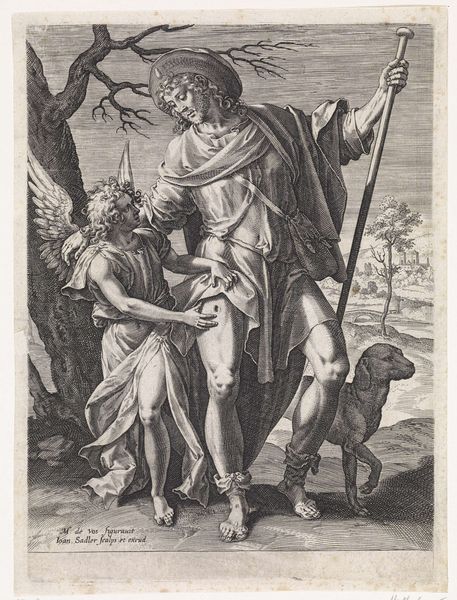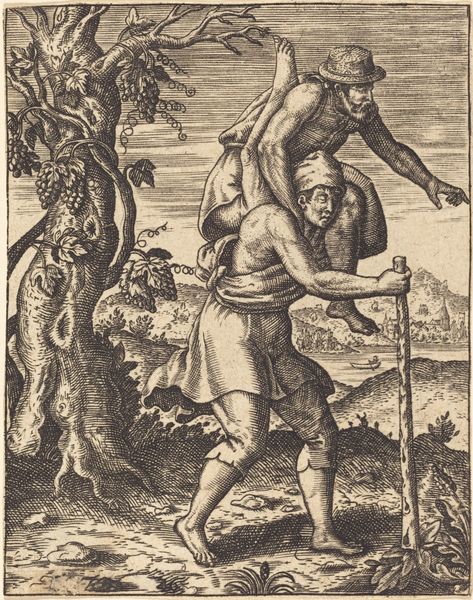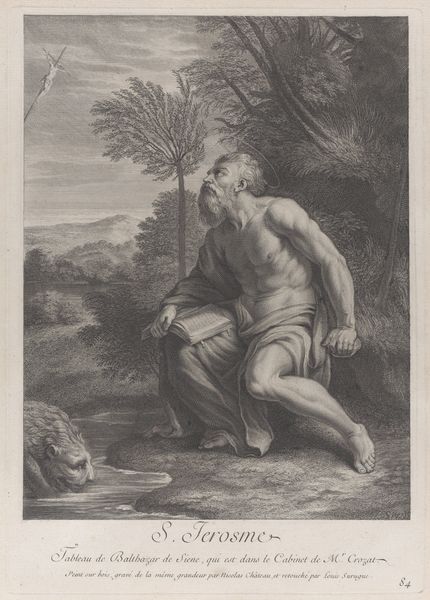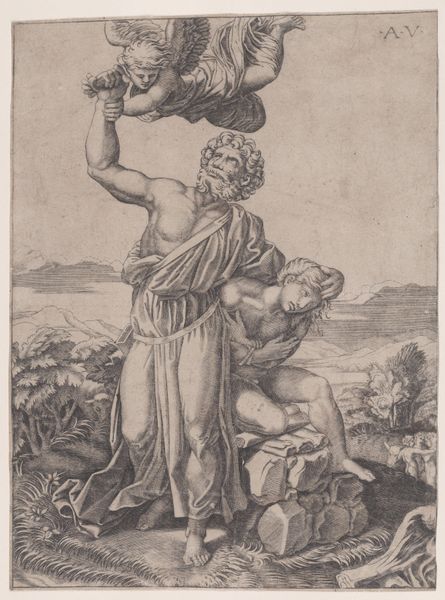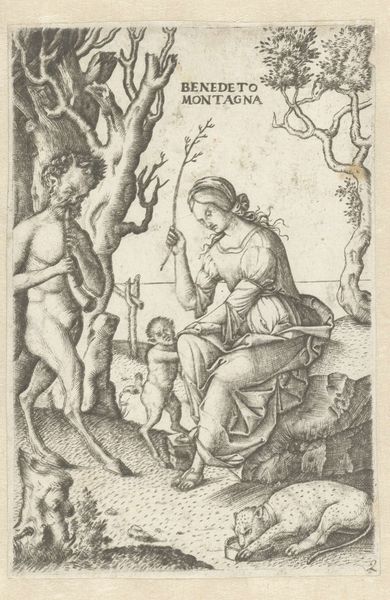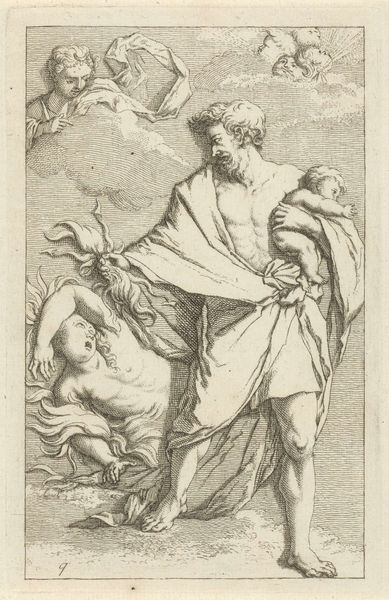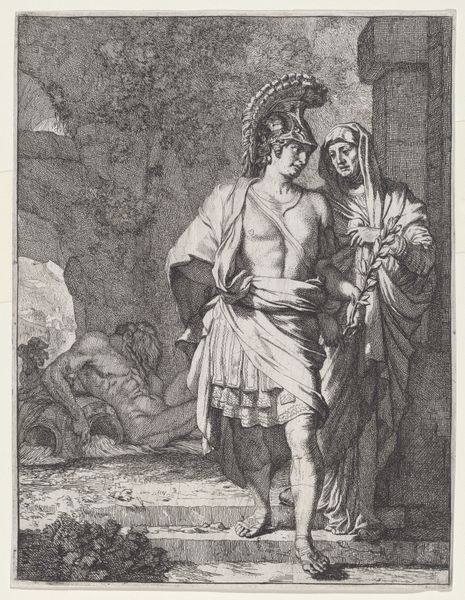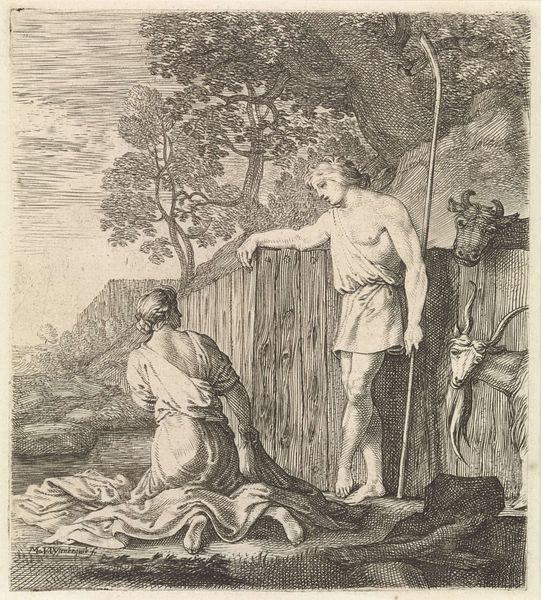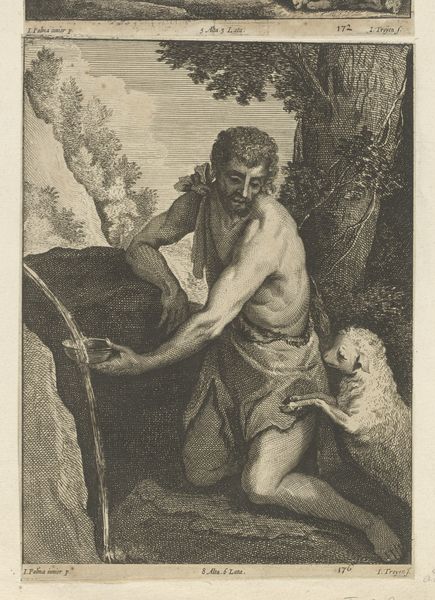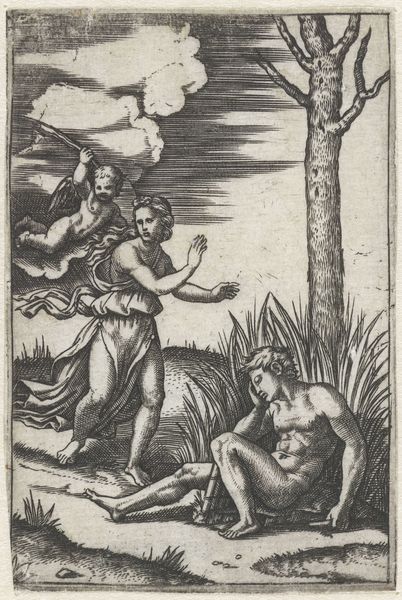
drawing, print, engraving
#
portrait
#
drawing
#
baroque
# print
#
men
#
history-painting
#
engraving
Dimensions: sheet: 20 11/16 x 14 5/8 in. (52.5 x 37.2 cm) plate: 14 3/4 x 9 1/4 in. (37.5 x 23.5 cm)
Copyright: Public Domain
Curator: This print, titled *Diogenes*, dates to sometime between 1685 and 1734, and it's attributed to Andrea Procaccini. It's currently held at the Metropolitan Museum of Art. My first impression? A somewhat weary tranquility. The etching itself has a softness to it, a kind of subdued drama. Editor: I’m immediately struck by the economy of means, the linear nature of the engraving and the deliberate focus on textures. I can almost feel the scratch of the metal on the plate. It reminds us that the production of this print itself relies on particular forms of craft and labor, and I wonder about its consumption during its historical context. Curator: Precisely. Look at Diogenes himself. The figure carries a specific symbolic weight. He’s turning away, rather disdainfully, from the boy drinking from his hands, because he recognizes that there are forms of human making or production—in this case, a cup—that have become obstructions to the direct experience of the world. Editor: Obstructions or tools, though? It seems less a question of corrupting directness and more about how human innovation interacts with basic needs. Even in its creation, this print involved processes of transformation: raw materials shaped into tools to render an image onto paper, and even these images of trees and water were carefully managed to fit inside the borders. Curator: But it's Diogenes' conscious choice to reject unnecessary tools, isn't it? He sees the boy drinking naturally and understands a deeper truth, unmediated by human constructs. That choice—that act of critical symbolic distancing from conventional ways—is key to his philosophical statement. Editor: True. However, I'm still fixated on the material process by which this symbolic rejection is delivered! And on the implied social circles that the print traveled in, considering its relative finesse and craft, as well as the history painting trope on display, and, indeed, on its current institutional framing as high art. Curator: A fine observation—considering the way value judgments, both symbolic and material, are ascribed across time is paramount to the artwork's understanding. Editor: Indeed!
Comments
No comments
Be the first to comment and join the conversation on the ultimate creative platform.
